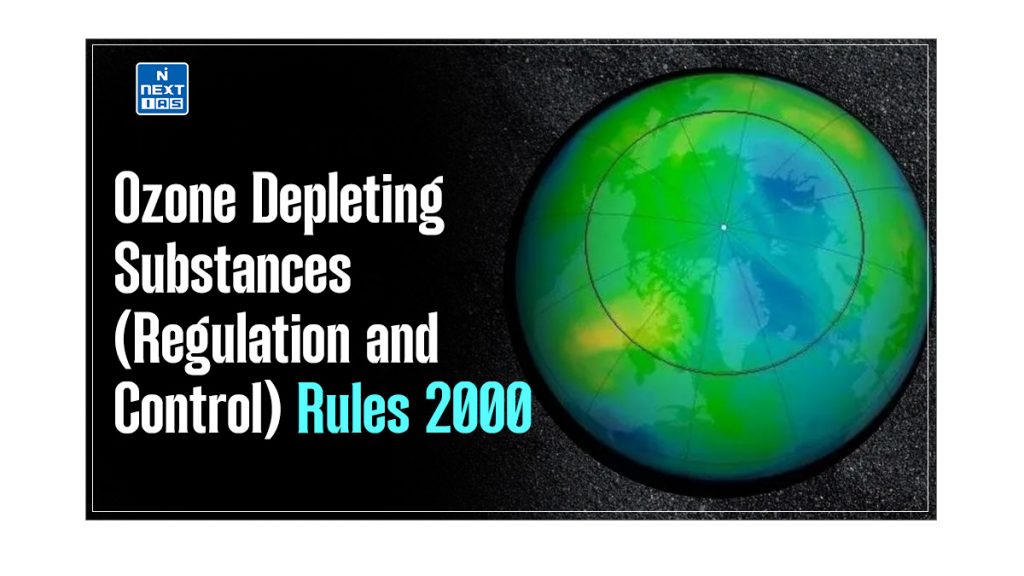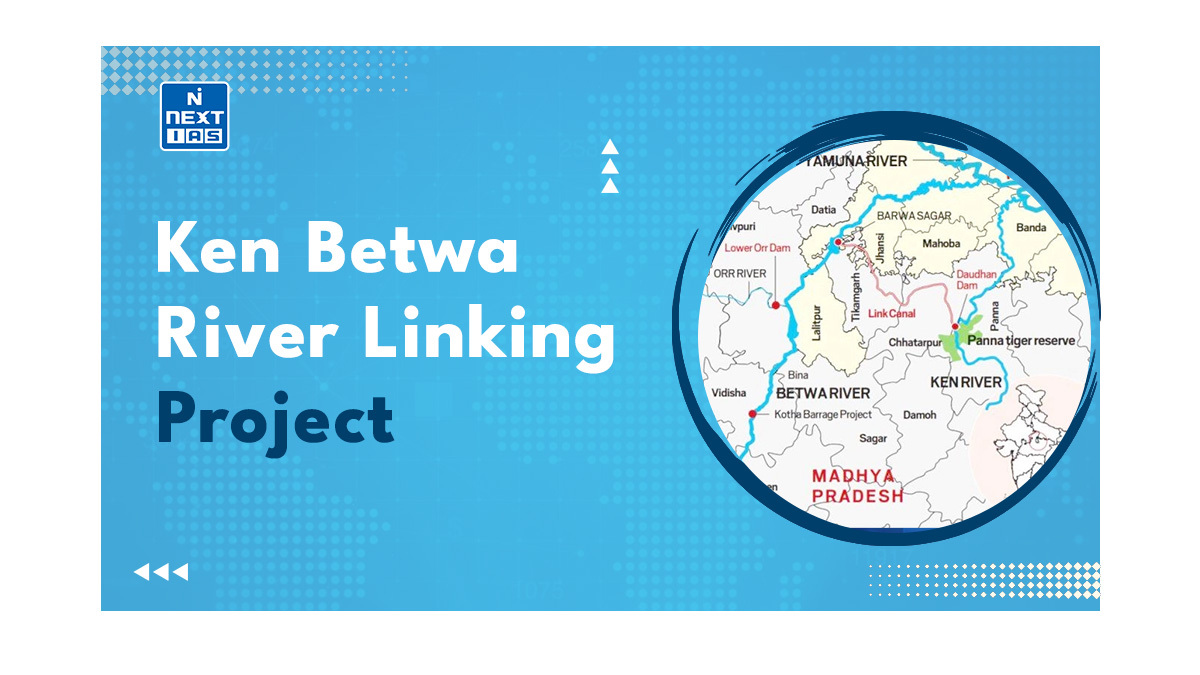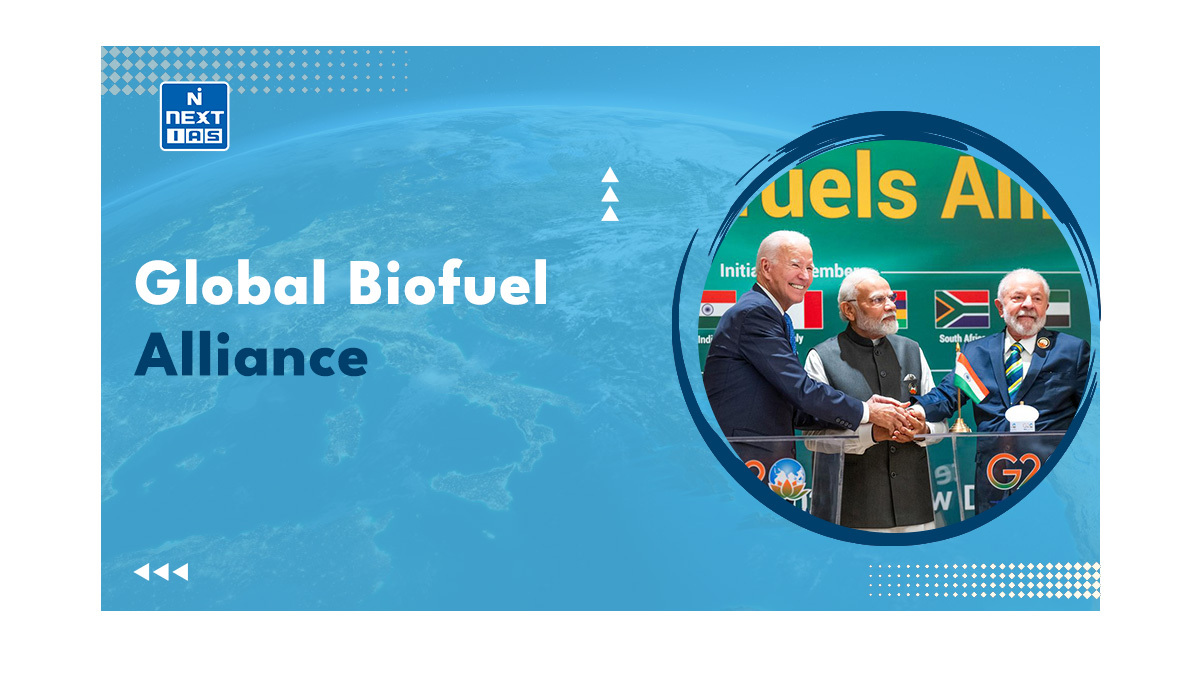
The Ozone Depleting Substances (Regulation and Control) Rules 2000, also known as Ozone Depleting Substances Rules 2000, are critical tools for India to tackle the threat of Ozone layer depletion. They have played a pivotal role in ensuring the dual goal of protecting the crucial Ozone layer and ensuring sustainable development. This article aims to study in detail the Ozone Depleting Substances (Regulation and Control) Rules 2000 (Ozone Depleting Substances Rules 2000), their needs, key provisions, benefits, challenges and other related aspects.
About Ozone Depleting Substances (Regulation and Control) Rules 2000
- The Ozone Depleting Substances (Regulation and Control) Rules 2000, or the Ozone Depleting Substances Rules 2000, are a set of rules in India that aim to combat the threat of Ozone layer depletion due to Ozone Depleting Substances (ODSs).
- The Ozone Depleting Substances Rules 2000 were established under the Environment (Protection) Act, 1986, to meet India’s obligations under the Montreal Protocol.
What is Ozone Layer?
- The Ozone Layer is a thin region of the Earth’s stratosphere that absorbs most of the Sun’s harmful ultraviolet (UV) radiation.
- It’s primarily composed of Ozone, a molecule containing three oxygen atoms (O3).
What are Ozone Depleting Substances (ODSs)?
- Ozone Depleting Substances (ODS) are human-made chemicals that contribute to the depletion of the Earth’s Ozone layer.
- Some common types of ODSs include – Chlorofluorocarbons (CFCs), Hydrochloroflurocarbons (HCFSs), Halons, etc.
Background of Ozone Depleting Substances Rules 2000
- The issue of depletion of Ozone layer was first discussed by the Governing Council of the UN Environment Programme (UNEP) in 1976.
- In 1977, a meeting of experts on the ozone layer was convened, after which the UN Environment Programme (UNEP) and the World Meteorological Organization set up the Coordinating Committee of the Ozone Layer (CCOL) to periodically assess ozone depletion.
- Intergovernmental negotiations for an international agreement to phase out ODSs started in 1981.
- This negotiation concluded with the adoption of the Vienna Convention for the Protection of the Ozone Layer in March 1985.
- The Vienna Convention encouraged intergovernmental cooperation on systematic observation of the ozone layer, research, monitoring of CFC production and the exchange of information.
- As per the Convention, the parties are committed to take general measures to protect human health and the environment against human activities that modify or deplete the ozone layer.
- The Vienna Convention is a framework agreement and does not contain legally binding controls or targets.
- In September 1987, the Montreal Protocol on Substances that Deplete the Ozone Layer was adopted.
- India, being a Party to the Vienna Convention for the Protection of the Ozone Layer and the Montreal Protocol on substances that deplete the Ozone Layer, has put the Ozone Depleting Substances (Regulation and Control) Rules, 2000, to control production, consumption, import, export, and trade with the non-parties to the Montreal Protocol.
- The Ozone Depleting Substances Rules 2000 are being enforced with effect from 19th July, 2000 under the Environment (Protection) Act, 1986.
Key Provisions of Ozone Depleting Substances Rules 2000
- The Ozone Depleting Substances Rules 2000 provide that no person should engage in the production and consumption of ODSs.
- The rules also prohibit all persons from engaging in the export and import of these ozone-depleting substances to and from the countries that are not specified in the notification.
- Export and import of these substances, even from those countries which are mentioned in the notification, require prior approval of license from the concerned authority.
- The Ozone Depleting Substances Rules 2000 also regulate the sale and purchase, as well as the use of these substances within the country.
- The rules mandate that the production and usage of ODSs must not exceed set standards, and it is not allowed to sell, trade, circulate or store those substances as per the annexed list without a special license.
- The rules put similar regulations on the substances that contain ODSs.
Progress Under Ozone Depleting Substances Rules 2000
- As of January 1, 2015 the production and consumption of key ODSs like CFCs, CTC halons, Methyl Chloroform and Methyl Bromide have already been phased-out globally.
- India had four major chemicals to phase out, namely CFCs, CTC, Halons and HCFCs.
- Ozone Depleting Substances Rules 2000 have been amended from time to time to facilitate the execution of national phase-out plans so as to meet the reduction targets as specified in the Protocol.
- These Rules have been further amended to align with the accelerated phase-out of HCFCs and the Ozone Depleting Substances (Regulation and Control) Amendment Rules, 2014.
Conclusion
The Ozone Depleting Substances (Regulation and Control) Rules, 2000 (Ozone Depleting Substances Rules 2000) represent a significant milestone in India’s environmental policy, aligning the country with global efforts to protect the ozone layer. Through effective regulation, India has made commendable progress in phasing out ODS, contributing to the recovery of the ozone layer. However, the journey is not yet complete, and continued vigilance, innovation, and cooperation will be key to ensuring a sustainable and ozone-safe future for India and the world.
Kigali Agreement
- The Kigali Agreement refers to the Amendment to the Montreal Protocol, which is legally binding and has come into force from January 1, 2019.
- The Agreement adheres to the principle of Common but Differentiated Responsibilities and Respective Capabilities (CBDR & RC).
- It recognizes the development imperatives of high-growth economies like India, and offers a viable and realistic roadmap for the implementation of a phase-out schedule for high Global Warming Potential (GWP) HFCs.
- The Kigali negotiations were aimed at including Hydrofluoro Carbons (HFCs) in the list of chemicals under the Montreal Protocol in order to regulate their production and consumption and phase them down over a period of time with the financial assistance from the Multilateral Fund created under the Montreal Protocol.
- It is to be noted that HFCs are not ozone depleting but global warming substance.
- India successfully negotiated the baseline years and freeze years which will allow it sufficient room for the growth of the concerned sectors using refrigerants being manufactured domestically.
- This will ensure unhindered growth with least additional cost and maximum climate benefits.
- The Kigali amendments to the Montreal Protocol will, for the first time, incentivise advancement and improvement in energy efficiency in case of use of new refrigerant and technology.
Frequently Asked Question (FAQ)
What is the full form of ODS?
ODS stands for Ozone Depleting Substances i.e. those substances which cause depletion of the Earth’s Ozone layer.






